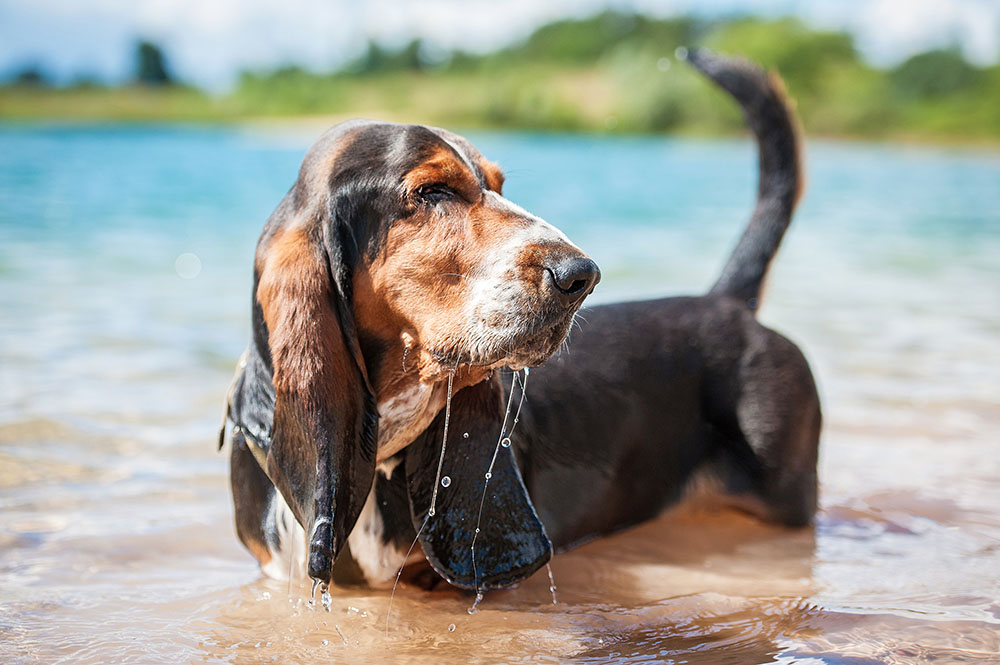Breed Profile – Basset Hound
15/12/2017
The Basset Hound makes a great family pet and doesn’t require as much exercise as other hounds. This friendly French breed has an intelligence that belies its unfair depiction as being a bit ‘slow’.
History of Breed: The Basset Hound originated in France, where monks developed the breed for hunting hare. The term ‘basset’ translates as ‘rather low’ in French and is used for six French basset breeds, of which the basset Hound is one. The characteristic features of the Basset all contribute to their hunting technique. The breed is low enough and sturdy enough to cope with dense undergrowth. When working, they get some protection from their loose skin and their long ears help to enclose the scent for their superior nose. Famously, the Basset Hound represents the Hush Puppy brand.
Life Expectancy: Around ten years.
Size: A medium-sized dog with a height range of 33-38cm and a weight range of 18-27kg.
Features: The Basset Hound may have short legs, but they are straight and powerful. The body is long and deep with a broad back. However, it is important that this does not become exaggerated to a degree that hinders the dog from moving. Breed standards dictate that the abdomen should clear the ground and there should be free and athletic movement. The coat is smooth and short, with any hound colour acceptable. However, long or soft hair and feathering are undesirable. The skin should be supple and loose. Again, Kennel Club breed standards are careful to discourage an unhealthy exaggeration of features.
The head is domed with a little wrinkle near the eyes and on the brow. The skin on the head is loose enough to wrinkle slightly when drawn forward or if the head is lowered. The neck is muscular with a pronounced dewlap and the upper lip flews overlap the lower. The eyes are dark and the nose is black. Furthermore, in lighter coat colours a mid-brown eye colour and brown/liver nose is acceptable. The Basset Hound’s characteristic ears are set low and long, being supple and velvety in texture.
Energy Levels/Exercise Required: Requiring less exercise than other breeds in the hound group, the Basset is a great option for those who enjoy a moderate amount of activity. About an hour of exercise per day is plenty for this breed. Activities that exercise their natural scent hound instincts and intelligence, such as hidden toys and treats, are a good idea.
Potential Health Problems: The Basset Hound’s pendulous ears need regular monitoring to prevent infections and ear mites. The breed’s ‘droopy’ eyes also make them prone to some eye conditions. The genetic condition that dictates the height of the Basset Hound is osteochondrodysplasia. Other breeds that are achondroplastic include Dachshunds and Bulldogs. Elbow dysplasia is common in achondroplastic breeds, due to the bone growth abnormality associated with the condition. Dysplasia can also have an early onset in dogs that carry too much weight. Feeding to condition with a nutritionally-balanced dog food is a good way to avoid excessive weight gain. Dr John Silver Chicken is a lighter maintenance diet designed for working dogs.
Temperament: This easy-going breed is affectionate and placid, but also tenacious and highly intelligent and never timid. The Basset has a strong pack instinct.
Child Friendly/Family Dog: Thanks to their good nature, the Basset Hound makes a great family dog. If well socialised in puppyhood, the Basset is good with small children and other pets. They like room to stretch out and a little outdoor space to run off excess energy or play games. Thanks to their ability to follow a scent to its source, outdoor areas must be extremely secure.
Likes: Following a scent, company.
Dislikes: Solitude, lack of exercise.



